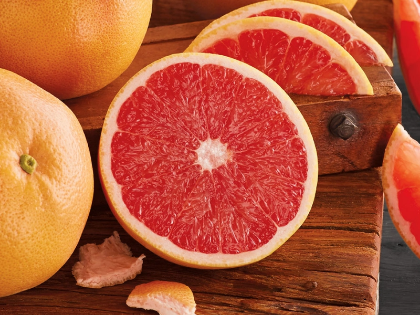How to Prepare Beef for Maximum Nutritional Value
Advertisement
1. Appreciating Beef's Nutritional Worth

Advertisement
 The cut of beef will affect its nutritional composition greatly. Though they offer plenty of protein, lean cuts, including sirloin, tenderloin, and flank steak, have less fat and calories. Choosing grass-fed beef might also provide other health advantages since it usually contains conjugated linoleic acid (CLA) and omega-3 fatty acids, which have been connected to several health advantages. To enhance nutritional value, choose organic or grass-fed beef when shopping for cuts with less marbling.
3.Marinating for Taste and Tenderness
The cut of beef will affect its nutritional composition greatly. Though they offer plenty of protein, lean cuts, including sirloin, tenderloin, and flank steak, have less fat and calories. Choosing grass-fed beef might also provide other health advantages since it usually contains conjugated linoleic acid (CLA) and omega-3 fatty acids, which have been connected to several health advantages. To enhance nutritional value, choose organic or grass-fed beef when shopping for cuts with less marbling.
3.Marinating for Taste and Tenderness
 Marinating beef improves its flavor but also its softness and nutritional value. Usually featuring an acid (such as vinegar or citrus juice), oil, and several herbs and spices, a marinade The acid aids in the breakdown of muscular fibers, therefore softening the flesh. Herbs and spices can also provide your dinner with antioxidants and anti-inflammatory action. To let the flavors permeate and enhance texture, marinating beef for at least thirty minutes—or up to several hours—is advised.
4. Cooking Techniques Aimed toward Nutrient Preservation
Marinating beef improves its flavor but also its softness and nutritional value. Usually featuring an acid (such as vinegar or citrus juice), oil, and several herbs and spices, a marinade The acid aids in the breakdown of muscular fibers, therefore softening the flesh. Herbs and spices can also provide your dinner with antioxidants and anti-inflammatory action. To let the flavors permeate and enhance texture, marinating beef for at least thirty minutes—or up to several hours—is advised.
4. Cooking Techniques Aimed toward Nutrient Preservation
 The way you cook beef will greatly impact its nutritional worth. Better still are grilling, broiling, and roasting since they let extra fat drain away while preserving vital nutrients. Steer clear of deep-frying and high-temperature fried foods since they could create dangerous substances and lower the general nutritional value. Aim for cooking beef to medium-rare or medium doneness; overcooking can cause dry, tough meat and nutrient loss.
5. Including Vegetables for a Harmonious Diet
The way you cook beef will greatly impact its nutritional worth. Better still are grilling, broiling, and roasting since they let extra fat drain away while preserving vital nutrients. Steer clear of deep-frying and high-temperature fried foods since they could create dangerous substances and lower the general nutritional value. Aim for cooking beef to medium-rare or medium doneness; overcooking can cause dry, tough meat and nutrient loss.
5. Including Vegetables for a Harmonious Diet
 Combining beef with a range of vegetables not only improves the taste of your dish but also increases its nutritional worth. Vegetables balance the minerals, vitamins, and fiber found in beef by offering their own. Either present stir-fried beef with vibrant veggies like bell peppers, broccoli, and carrots alongside a fresh salad or consider cooking it. This combo increases nutritional intake and helps to lower the total calorie density while nevertheless producing a well-rounded dinner.
6. Value Resting Meat Has
Combining beef with a range of vegetables not only improves the taste of your dish but also increases its nutritional worth. Vegetables balance the minerals, vitamins, and fiber found in beef by offering their own. Either present stir-fried beef with vibrant veggies like bell peppers, broccoli, and carrots alongside a fresh salad or consider cooking it. This combo increases nutritional intake and helps to lower the total calorie density while nevertheless producing a well-rounded dinner.
6. Value Resting Meat Has
 Let beef rest for a few minutes after cooking before slicing. Resting lets the liquids spread around the meat, therefore producing a more soft and tasty finished result. Maintaining moisture and improving the whole dining experience depend on this last stage. Based on the cut size, try to rest the meat for five to ten minutes. Taste and texture can be much improved by this easy habit.
7. Wise Use of Leftovers
Let beef rest for a few minutes after cooking before slicing. Resting lets the liquids spread around the meat, therefore producing a more soft and tasty finished result. Maintaining moisture and improving the whole dining experience depend on this last stage. Based on the cut size, try to rest the meat for five to ten minutes. Taste and texture can be much improved by this easy habit.
7. Wise Use of Leftovers
 Without any cooking involved, leftover beef can be a quick approach to savor the nutritional value of this protein source. Leftovers should be included in soups, stir-fries, or salads to enhance their nutritional worth. This method guarantees a well-balanced meal and adds taste as well. Reheat slowly to retain moisture and avoid the meat from toughening.
8. Knowing Portion Amounts
Without any cooking involved, leftover beef can be a quick approach to savor the nutritional value of this protein source. Leftovers should be included in soups, stir-fries, or salads to enhance their nutritional worth. This method guarantees a well-balanced meal and adds taste as well. Reheat slowly to retain moisture and avoid the meat from toughening.
8. Knowing Portion Amounts
 Although beef is a healthy food, keeping a good diet depends on moderation of consumption. Usually weighing three to four ounces, cooked beef serves about the size of a deck of cards. While still allowing you to reap the advantages of beef, awareness of portion proportions helps prevent too high calorie consumption. Combining beef with sensible amounts of veggies and complete grains on your plate will make for a filling and healthy dinner.
9. The Function of Spice
Although beef is a healthy food, keeping a good diet depends on moderation of consumption. Usually weighing three to four ounces, cooked beef serves about the size of a deck of cards. While still allowing you to reap the advantages of beef, awareness of portion proportions helps prevent too high calorie consumption. Combining beef with sensible amounts of veggies and complete grains on your plate will make for a filling and healthy dinner.
9. The Function of Spice
 Seasoning beef with herbs and spices might improve its taste and nutritional value. Garlic, rosemary, thyme, and black pepper, among other flavors, provide health advantages, including anti-inflammatory and antioxidant qualities. Changing the seasoning mix will improve your beef recipes and supply extra nutrients. Choose natural flavor enhancers instead of heavy sauces that could have additional sugars and bad fats.
10. Synopsis of beef preparation for nutritional worth
Seasoning beef with herbs and spices might improve its taste and nutritional value. Garlic, rosemary, thyme, and black pepper, among other flavors, provide health advantages, including anti-inflammatory and antioxidant qualities. Changing the seasoning mix will improve your beef recipes and supply extra nutrients. Choose natural flavor enhancers instead of heavy sauces that could have additional sugars and bad fats.
10. Synopsis of beef preparation for nutritional worth
 Maximizing the nutritional worth of beef calls for careful choice of cuts, suitable cooking methods, and thoughtful preparation strategies. Lean cuts, marinating, and using healthy cooking techniques will help you to improve the taste and nutritional value of beef. Including veggies, knowing how much to eat, and utilizing strong seasonings also help to create a balanced diet. These techniques will help you to support your general well-being by allowing you to appreciate the great flavor of beef and gain its several health advantages.
Maximizing the nutritional worth of beef calls for careful choice of cuts, suitable cooking methods, and thoughtful preparation strategies. Lean cuts, marinating, and using healthy cooking techniques will help you to improve the taste and nutritional value of beef. Including veggies, knowing how much to eat, and utilizing strong seasonings also help to create a balanced diet. These techniques will help you to support your general well-being by allowing you to appreciate the great flavor of beef and gain its several health advantages.
Advertisement
Advertisement







